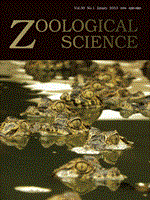The literature supports the hypothesis that the pelvic excavation is the bottom of the abdominal cavity, which is covered by the peritoneal serous membrane in order to promote visceral dynamics. We studied the peritoneum in eight specimens of Xenarthra (Euphractus sexcinctus, Myrmecophaga tridactyla and Tamandua tetradactyla). The animals were fixed in formaldehyde (10%). For description and analyzes of the pelvic peritoneum, dissection and photo documentation were performed. We saw that the parietal serous membrane reflected, involving the pelvic viscera. The urorectal septum is the floor of the higher pelvis as a serosa reflection between the bladder and the rectum. The bladder and gonads are completely peritonized in adult armadillo. In anteaters and young armadillos, the testicles are in a position analogous to the uterus, joined by the conjunctive septum at the midline and along with the bladder, they partially project to the higher and lower pelvis. In Myrmecophagidae, vesicogenital, rectogenital and sacrorectal recesses were observed. In Dasypodidae, the recesses are similar to those of other recent vertebrates.
How to translate text using browser tools
1 January 2013
Pelvic Peritoneum in Male Armadillo and Anteater (Xenarthra, Mammalia): A Comparative Survey
Lorenna Cardoso Rezende,
Jussara Rocha Ferreira
ACCESS THE FULL ARTICLE

Zoological Science
Vol. 30 • No. 1
January 2013
Vol. 30 • No. 1
January 2013
anteater
armadillo
genital tract
morphology
peritoneum




